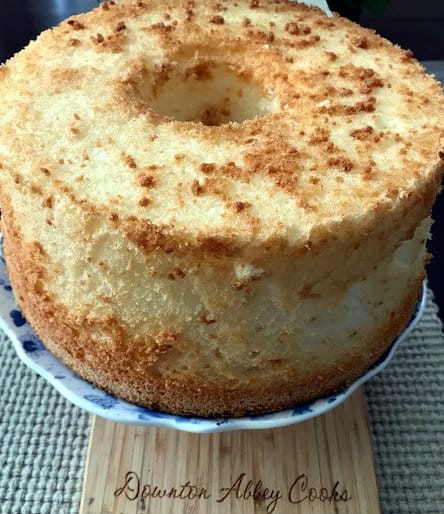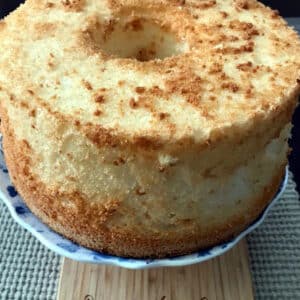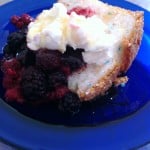 Angel Food Cake has long been a favourite light and heart-healthy dessert. It is a great low-fat dessert on its own but also very versatile. You would think that since it is a base ingredient for English trifle.
Angel Food Cake has long been a favourite light and heart-healthy dessert. It is a great low-fat dessert on its own but also very versatile. You would think that since it is a base ingredient for English trifle.
Originating in America in the 1880s, Fannie Farmer’s The Boston Cooking School Cook Book, listed the first mention of the “Angel Cake.”
Some believe it evolved as the result of numerous egg whites left over after the making of noodles, may or may not be the brainchild of thrifty Pennsylvania cooks who considered it sinful to waste anything.
Angel food cakes became more popular when time-saving appliances such as egg beaters were more readily available.
My grandmother helped teach me proper techniques to make the best Angelfood cake. This recipe is never-fail, but if you have a mishap and it doesn’t properly rise for you, you can always make a trifle and no will be the wiser.
Never Fail Angel Food Cake
Ingredients
- 1-2/3 cups 12-13 egg whites fresh is best (if you use liquid whites or frozen your cake won't raise as high)
- 3-1/2 oz. (1 cup) cake flour sift three times
- 5 oz. (1-1/3 cups) confectioners’ (icing) sugar
- 1/4 tsp. salt
- 1-1/2 tsp. cream of tartar
- 1 cup Granulated sugar (or sugar substitute)
- 1 tsp. pure vanilla extract
- 2 tsp. lemon zest finely grated
Instructions
- Heat the oven to 325°F. This is the optimum temperature for Angel Food cake. Put the egg whites in the super clean bowl of a heavy-duty electric mixer. Set aside until the whites are slightly below room temperature, 60°F, about 1 hour.
- Sift the cake flour, confectioners’ sugar, and salt onto a sheet of waxed paper; set aside. Cake flour gives you the best rise.
- Once the whites reach room temperature, whip the whites on medium-low speed until frothy . Add the cream of tartar; turn the speed to medium. Continue whipping only until soft peaks form. Do not overbeat as your cake will not reach optimum volume.
- In a slow, continuous stream, add the granulated sugar, whipping until the whites thicken and form soft, droopy peaks. In the final moments of whipping, add the vanilla and lemon zest. The mixture should be fluffy but fluid enough to pour.
- Sprinkle one-quarter of the flour mixture over the whites and, using a rubber spatula, gently fold the dry ingredients into the whites. Continue folding in the flour mixture, one-quarter at a time, until it has all been added.
- Gently pour the batter into an ungreased 10-inch tube pan. You can also pour into 2 loaf pans or muffin tins. Use a knife to gently work cut through the batter to remove excess air bubbles.
- Bake in the bottom third of the oven until the top is light golden and the cake feels spongy and springs back when touched, 45 to 50 minutes.
- Immediately invert the pan onto the neck of a bottle or a funnel and let cool completely (at least an hour) before removing from the pan.
- To remove the cake from the pan, tilt the pan on its side and gently tap the bottom against the counter to loosen the cake. Rotate the pan, tapping a few more times as you turn it, until the cake comes free from the sides of the pan. Lift the cake from the pan. Ideally it should come out cleanly, leaving most of the crust on the sides of the pan.
- To serve, use a serrated knife and cut with a gentle sawing motion.


